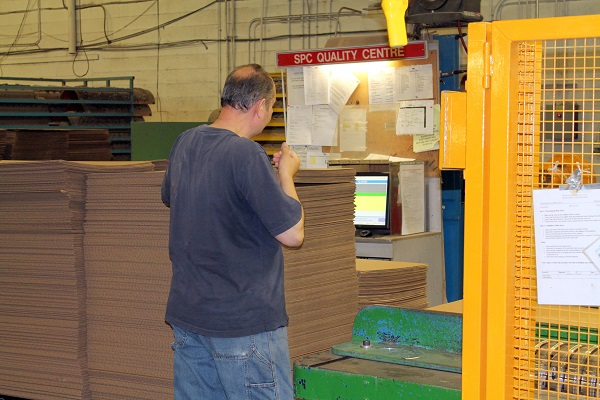
New risk management research reveals key challenges facing industrial workers
Poster: Top 10 Health and Safety Risks in Paper Products Sector - Download and share
In a recent risk assessment workshop, industry experts from Ontario’s paper products sector gathered to address critical concerns regarding workplace health and safety. Ensuring proper training and monitoring of workers on forklifts has emerged as a top risk within the industry.
The workshop, facilitated by Jerry Traer, Program Training Specialist at Workplace Safety North, included representation from management, workers, the Ministry of Labour, Immigration, Training and Skills Development (Ministry), and Workplace Safety North (WSN).
“Both management and workers unanimously agreed that one of the top risks for paper products workers was operating mobile equipment,” says Traer.
Here are the top 10 health and safety risks in the paper products sector as identified by workers, supervisors, and employers:
1. Lack of training and monitoring of workers operating mobile equipment
One of the biggest risks is when workers don’t have enough training or supervision when they’re using mobile equipment. This includes forklifts and other machines.
2. Conveyor equipment injuries
Another risk is when workers get hurt while working with conveyor equipment. This could be because of inadequate guarding, exposed machine components, and improper maintenance.
3. Worker injury due to substance use
Workers can get hurt if someone is using drugs or alcohol – and even prescribed substances – while on the job. This can be dangerous for everyone.
4. Insufficient training leads to worker injuries
When workers don’t get enough training, they're more likely to get hurt on the job.
5. Workplace culture leads to worker injuries
Inappropriate behaviours and problematic acceptable work practices can also lead to injuries. A psychologically safe workplace helps ensure a healthy workplace culture.
6. Exposure to noise
Loud noises in the workplace can damage workers’ hearing over time.
7. Machine interaction causing worker injury
Workers can get hurt around machines if they get too close to components that are in operation.
8. Chemical exposure harming worker
Working with chemicals can be dangerous if workers aren’t careful or don’t have the right protection.
9. Struck by forklifts
If a forklift strikes someone, it can cause serious injuries.
10. Lack of proper safety gear results in worker injuries
When workers don’t have the right gear to keep them safe, they’re more likely to get hurt.
WSN provides occupational health and safety resources, training, ergonomic, and industrial hygiene and consulting for the Ontario paper, printing, and converting sector, including corrugated and solid fibre boxes, folding cartons, paper products; printing, platemaking, and binding; and pulp, newsprint, and specialty papers.
Addressing the risks
To improve training and monitoring workers using mobile equipment, specific actions need to happen.
“The next step will be a root cause analysis of the top risk. We’ll take a deep dive into why this risk is present, and figure out, as an industry, the best ways to keep workers safe,” says Traer.
“It’s very important to make sure safety rules are followed strictly. Supervisors need to regularly check that everyone is following these rules and doing things safely. Also, there needs to be a change on how we think about safety. Operating equipment safely must be the priority, and should not be affected by production pressures.”
“Helping drivers get more practice and support is important. When they have more experience and someone to guide them, they can become better drivers,” adds Traer.
Collaborative efforts for safer workplaces
The workshop emphasized collaboration and transparency. People discussed the issues both in person and in online meetings. Results were validated through presentations and discussions. Employers, supervisors, workers, the Ministry and WSN worked together to find effective solutions and foster a culture of safety on the road.
“It’s important to recognize and address risks to protect the well-being of workers in Ontario’s paper products industry,” says Traer. “By working together and finding solutions, the industry is helping make sure the workplace is safe for everyone—whether you’re driving a forklift or working around a conveyor belt.”
Next steps include conducting a root cause analysis with industry experts to determine how to best protect workers. For more information on how to stay safe at work, contact a Health and Safety Specialist at Workplace Safety North. It’s important for everyone to work together to make sure workplaces are safe for everyone.
Related
Poster - Top 10 Health and Safety Risks in Paper Products Sector
Paper, printing and converting sector risks assessments and root cause analyses including pulp and paper, corrugating, and paper products sectors.
Free paper, printing, and converting health and safety resources, including guidelines, safety talks, posters, and more.
